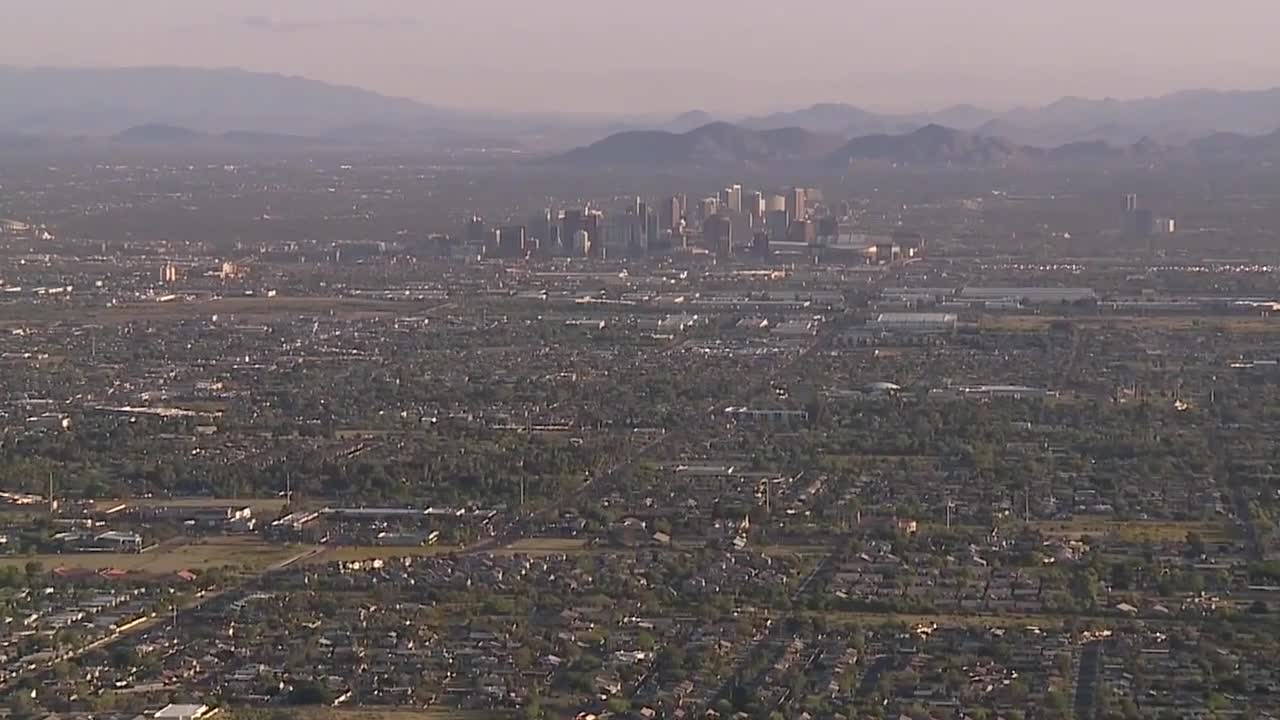PHOENIX — Millimeter by millimeter, Phoenix is sinking lower. It joins nearly every other major city in the nation in experiencing a phenomenon called land subsidence, where the earth's surface moves downward, according to a study published in the online journal Nature Cities.
The drop, though gradual, could lead to widespread infrastructure damage and flooding, the study warns. The signs of land subsidence are familiar: uneven sidewalks, damage to a building's foundation, cracked pavement, floors slanting, and doors and windows that don't close as easily as they once did.
Leonard Ohenhen, a researcher with the Lamont-Doherty Earth Observatory (LDEO) at Columbia University's Climate School, led the study. He says it found that 1.4 million people in Phoenix are already impacted, with 113,000 buildings labeled medium to high risk and another 172 buildings seen as high risk.
Land subsidence is often seen more as a coastal issue, with cities like Miami making headlines as they face the dual threat of land subsidence and sea level rise. But the issue exists widely in inland, landlocked cities, too, the study found. Texas, in particular, faces some of the most severe land subsidence in the nation. The misconception that coastal cities struggle with the issue more, Ohenhen said, can lead to a delay in communities being proactive about addressing it.
The study found Phoenix is sinking by 0.8 millimeters a year. Some parts are sinking faster. Areas in south and east Phoenix are seeing notable land subsidence, but the most extreme cases can be seen along the Salt River and near the Old Skunk Creek landfill, sinking up to 2 centimeters per year.
"One millimeter or two millimeters or five per year often accumulates into really, really, large rates over time," said Ohenhen. "For most infrastructure in the U.S., the [American Society of Civil Engineers] recommended a total settlement of 25 millimeters over the lifetime of the buildings."
While the overall amount sounds very small, when added up over the course of years and decades, Ohenhen warns it could make the city, and its residents, vulnerable to more serious issues.
"In awful cases, subsidence can exacerbate such flooding regimes in cities, regardless of whether you are coastal or not," he explained.
In most cases, the study found the sinking occurred as a result of groundwater pumping. In Phoenix, it also happens because of landfills. Groundwater pumping is being used as a water extraction method in Phoenix, though in small amounts. Only 2% of the city's water supply comes from groundwater, the City of Phoenix says, with the majority of the city's water coming from the Salt and Verde Rivers and the Colorado River.





